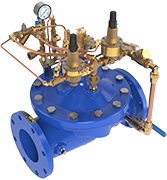|
Gonkish posted:Alright, so I'm here for one specific purpose: running my 4670K at 4.8GHz at full load results in an estimated draw of about 90W. Is that correct/normal? The voltage never exceeds 1.297. Temps under that sort of load settle in the 65-70C range (cooler is a Hyper 212 EVO). You guys have told me numerous times that I won the lottery, and I believe you, I just want to make absolutely certain that there's nothing horrifically wrong with these numbers that I may not understand. gently caress. This makes me want to smash my chip with a hammer. I need 1.4v for a measly 4.5ghz 
|
|
|
|

|
| # ? May 10, 2024 00:04 |
|
  Did some tests with IBT. Temps were throttling the cores quite a bit, but everything was perfectly stable.
|
|
|
|
Gonkish posted:
If you're not careful someone from [H] is going to lurk and find this thread and start a vendetta man, watch your back. Heavy is the head that wears the crown. For what it's worth those are dangerously high temps and I wouldn't expect that chip to live a healthy life, but for now I guess you've got some pretty wicked clocks... Just, you know, take care with that level of heat, 22nm 3d transistors are TINY TINY TINY and fragile, and resistance increases as a function of heat and power, so you're basically asking for trouble running anything at those kind of temps. That's dangerously hot for a GPU, and they're made to run at 80ºC+, you might want to look into a better cooling solution. Agreed fucked around with this message at 00:12 on Aug 4, 2013 |
|
|
|
Yeah, but the only time I ever see temps like that is with a synthetic benchmark. Normal usage is 60-70C and no higher. Only Prime95/IBT reach those insane temps. Even using a texture optimizer (which is pretty taxing on the CPU) for Skyrim netted me 71C, max. Games like Planetside 2 (which is hugely CPU-heavy) are 65-68C, at max.
Gonkish fucked around with this message at 00:20 on Aug 4, 2013 |
|
|
|
I've upped the Turbo clock of my 2600k to 4.3Ghz, but does it make a practical difference to change the settings so that Turbo is constantly enabled as the OP describes?
|
|
|
|
Depends what the motherboard has changed for you. If literally all that changed is the turbo ratio, your long-term performance won't change; you'll hit the turbo power/temperature caps that much faster and return to stock clocks. Run a benchmark/stress test with HWiNFO going, and if your CPU stays at 4300 MHz, no changes are needed because the motherboard handled it already.
|
|
|
|
I ran Prime95 for a while to test stability at 4.3Ghz, leaving voltage at auto (Asus P67 mobo) I hit a max temperature of 72 and VID of 1.3811v. Next I tried setting voltage to manual at 1.3v exactly, but this resulted in Windows 8 displaying a crash screen followed by a restart. Has anyone done a similar overclock, because I'd like to get an idea of what voltage/temperature I should expect at 100% load? I'm running all this with a Cooler Master Hyper 212 cpu fan, by the way. EDIT: Hmm, help me understand something here: according to CPU-Z, when I start a stress test my vcore decreases (below 1.3) as opposed to when it is idling. Why? Haeleus fucked around with this message at 22:28 on Aug 4, 2013 |
|
|
|
Haeleus posted:I ran Prime95 for a while to test stability at 4.3Ghz, leaving voltage at auto (Asus P67 mobo) I hit a max temperature of 72 and VID of 1.3811v. Next I tried setting voltage to manual at 1.3v exactly, but this resulted in Windows 8 displaying a crash screen followed by a restart. Has anyone done a similar overclock, because I'd like to get an idea of what voltage/temperature I should expect at 100% load? I'm running all this with a Cooler Master Hyper 212 cpu fan, by the way. I have a 4670K @ 4.2 and 1.281V, p95 puts me at ~70C on the second torture test. Not sure if that helps or not. edit: I actually have it on auto also. It fluctuates between 1.2 and 1.28 at 100% load. z06ck fucked around with this message at 22:32 on Aug 4, 2013 |
|
|
|
That sounds similar to my situation then, I just wanted to confirm that getting temperatures 70-75C wouldn't result in deterioration/damage to my CPU. I'll try upping the fan speed a little next time I load up BIOS and compare temperatures.
|
|
|
|
Haeleus posted:That sounds similar to my situation then, I just wanted to confirm that getting temperatures 70-75C wouldn't result in deterioration/damage to my CPU. I'll try upping the fan speed a little next time I load up BIOS and compare temperatures. Your CPU will throttle before that happens. Having too much core voltage will wreck your poo poo, though.
|
|
|
|
z06ck posted:Your CPU will throttle before that happens. Having too much core voltage will wreck your poo poo, though. So I'll assume having a VID of 1.3811v is acceptable (though I've never seen actual vcore go above 1.38v during a stress test).
|
|
|
|
Haeleus posted:So I'll assume having a VID of 1.3811v is acceptable (though I've never seen actual vcore go above 1.38v during a stress test). That's pretty high but I can't say how unsafe or safe it'd be.
|
|
|
|
Haeleus posted:So I'll assume having a VID of 1.3811v is acceptable (though I've never seen actual vcore go above 1.38v during a stress test). Intel's specified maximum is 1.52V. It seems to be a popular opinion amongst Overclock.net users that you shouldn't go above 1.4V on air cooling, or 1.45V on water cooling. Ideally, you do what you can while keeping it under 75C. 95C is the point where the CPU will actually throttle itself to prevent damage.
|
|
|
|
An Unoriginal Name posted:Intel's specified maximum is 1.52V. It seems to be a popular opinion amongst Overclock.net users that you shouldn't go above 1.4V on air cooling, or 1.45V on water cooling. I was not aware of this, thanks.
|
|
|
|
An Unoriginal Name posted:Intel's specified maximum is 1.52V. It seems to be a popular opinion amongst Overclock.net users that you shouldn't go above 1.4V on air cooling, or 1.45V on water cooling. That's good to hear, thank you. Just one more thing then: what sense does it make that CPU-Z reports a lower vcore during 100% load (using Prime95) than when it is idle (~1.272v 100% vs. ~1.320v idle)? So far it has been stable at these settings.
|
|
|
|
Haeleus posted:That's good to hear, thank you. Just one more thing then: what sense does it make that CPU-Z reports a lower vcore during 100% load (using Prime95) than when it is idle (~1.272v 100% vs. ~1.320v idle)? So far it has been stable at these settings. That certainly sounds like Vdroop to me. To make it very simple, it is a phenomenon where, when under load, the voltage droops below what you have set in the BIOS. It can be a good or bad thing depending on how you look at it; most overclockers seek ways to compensate for the droop because it can cause instability. That compensation usually comes in the form of a BIOS setting named LLC/Load Line Calibration or similar. Consult your manual/the internet to see what you can do if you're concerned. Here's a more technical thing you can read about it.
|
|
|
|
That vdroop article is outdated and inaccurate relative to any processors you're likely to be using today. The VID can be up to 1.5, but the voltage delivered should never exceed 1.38v to stay within Intels specifications. Vdroop is designed into the power delivery specification and is intentional.
|
|
|
|
Haeleus posted:EDIT: Hmm, help me understand something here: according to CPU-Z, when I start a stress test my vcore decreases (below 1.3) as opposed to when it is idling. Why? Here's AnandTech's graphic from when the VID/Vcore split was introduced:  The line is Vcore. VID is "the value beyond which Vcore will never go." Voffset isn't paid attention to and is a different thing than the Offset voltage you adjust when overclocking. Also, Intel's specified maximum of 1.5V VID is an artificial limit based on the bit length for the VID signalling. As in, that's the maximum voltage that the VRM logic can specify, not the silicon's limit. The actual safe voltage for Sandy Bridge, straight from Intel, is 1.38V (Vcore).
|
|
|
|
Alright, that sheds some light on what vdroop is, but what is the intuition of lowering voltage when the CPU needs it the most? Maybe I'm missing something but it seems counter-intuitive, I understand preventing turbo over voltage but not dropping below idle voltage. On the side, I've managed to get a stable overclock at 4Ghz with a vdroop from ~1.26v to 1.2v during 100% load (funny enough I think this is below the auto settings I've ran with for over 2 years at stock speeds). I'll try fiddling some more with LLC and speed step later on.
|
|
|
|
Haeleus posted:Alright, that sheds some light on what vdroop is, but what is the intuition of lowering voltage when the CPU needs it the most? Maybe I'm missing something but it seems counter-intuitive, I understand preventing turbo over voltage but not dropping below idle voltage. What's going on is not that the voltage regulator is actively lowering voltage. What's going on is that an increased CPU load drops the voltage and the voltage regulator does not (and is not designed to) fully compensate, because perfect voltage regulation is extremely difficult and expensive.
|
|
|
|
Alright, seeing as with my 760 the temps during gameplay on the CPU are hovering around 72C with my Hyper 212 EVO (and that's without the second 760 that I'm planning on), I'm going to try water cooling for the first time ever. That said, what are goon opinions on the Corsair H100i? It seems to be right up my alley: simple to install, simple to maintain, and I can even fit the radiator in my Carbide 500R without any trouble. The only concern I have is that I have heard rumblings of the backplate being loose on LGA 1150 boards for some reason.
|
|
|
|
Haeleus posted:Alright, that sheds some light on what vdroop is, but what is the intuition of lowering voltage when the CPU needs it the most? The way I'm seeing it is that it prevents the voltage from spiking too high when the load on the CPU suddenly falls
|
|
|
|
Gonkish posted:The only concern I have is that I have heard rumblings of the backplate being loose on LGA 1150 boards for some reason.
|
|
|
|
Good to know. So the H100i is a solid choice, then?
|
|
|
|
Gonkish posted:Good to know. So the H100i is a solid choice, then? I'd have to say so. With the Swiftech H220 embargo'd in the US for patent reasons, the Corsair 100i, Cooler Master Seidon 240M, etc. are all the best you can get at the 240mm size.
|
|
|
|
I read this guide yesterday and thought I should try some overclocking. I've a 4670k, Asrock z87-c and a NH-D14. The guide basically that you should push the CPU multiplier on 1.25V. But this very page tells me that I can go closer to 1.40V with good air cooling. What I'm thinking out loud is; there's no problem of setting the Vcore to 1.35V (and a 4.6Ghz~) if it passes a stability test and the temperature stays below 90 celcius in the said stress test? And, is there much to be gained by tweaking the RAM? I gave up as the smallest change kept crashing my system, so I'm wondering if I'm "missing out" on a lot of potential. e: it ran at 4.4Ghz on 1.25V yesterday. Could be worse I guess. e2: I need a probation for failing to read even the tl/dr section of the OP. Daktari fucked around with this message at 14:07 on Aug 15, 2013 |
|
|
|
Daktari posted:I read this guide yesterday and thought I should try some overclocking. quote:What I'm thinking out loud is; there's no problem of setting the Vcore to 1.35V (and a 4.6Ghz~) if it passes a stability test and the temperature stays below 90 celcius in the said stress test? quote:And, is there much to be gained by tweaking the RAM? I gave up as the smallest change kept crashing my system, so I'm wondering if I'm "missing out" on a lot of potential. quote:e: it ran at 4.4Ghz on 1.25V yesterday. Could be worse I guess.
|
|
|
|
Haswell is on the same process node as Ivy Bridge, 22nm FinFET, so I wouldn't be surprised if its voltage tolerance is the same. That tolerance is "1.4V will burn out the chip in 1 year 9 months if you run it 24/7." I really don't recommend that, but if you're sure this is a "just a few hours a day" or "weekend warrior" type system, then sure, I guess. Just don't resell the CPU afterwards.
|
|
|
|
How hot are you guys letting your i5-4670k's run? Intel specifications say no more than 72c, but I'm having a difficult time overclocking much without going over that while under load. Also, what's the recommended program to monitor temps with these chips? I've tried core temp, real temp, and aida64. They have almost a 10c spread between them sometimes. When I'm doing a stress test overclocked it runs about 65-72c, but then periodically it will spike to 75c and I saw it jump from 72c to 85c a few times.. is that really accurate? Does the temp really jump 10 degrees for a moment or is the application not reporting correctly? If it reports correctly, are spikes like that safe for longevity if the average temp over time is lower?
SuperNuts fucked around with this message at 02:33 on Aug 18, 2013 |
|
|
|
My 4670K (4.8GHz) is pushing 70+ lately, after I've installed a 760. I'm going to grab an h100i to solve that problem, since I'm also planning on grabbing ANOTHER 760 for SLI hijinks. I've seen upwards of 75+ and that's just too hot for comfort.
|
|
|
|
Gonkish posted:My 4670K (4.8GHz) is pushing 70+ lately, after I've installed a 760. I'm going to grab an h100i to solve that problem, since I'm also planning on grabbing ANOTHER 760 for SLI hijinks. I've seen upwards of 75+ and that's just too hot for comfort. You're hitting 75+ doing what, running p95 or playing games?
|
|
|
|
z06ck posted:You're hitting 75+ doing what, running p95 or playing games? Playing games. Prime95 makes the thing go nuclear and hit 90+. I'm thinking a few things have/might have happened: 1.) the 760 is putting a lot of hotter air into the case 2.) My airflow is hosed somehow 3.) the heatsink might be loose or something along those lines (though I can't see why that would happen, it's nonetheless a consideration). MOST games only hit about 65. CERTAIN games, however, get upwards of 70+. Heavily modded Skyrim, Planetside 2 after a few hours, etc. Most other games keep the temps sane, hence why I'm looking at the 760 as the heat culprit. Adding another 760 will probably only increase this, so I'm also going to grab the h100i as insurance. Gonkish fucked around with this message at 21:28 on Aug 18, 2013 |
|
|
|
Yeah considering your chip and its ability to overclock you are probably a good candidate for an H100 or expensive air cooler.
|
|
|
|
So I am trying to overclock my 4670k on my Z87-A asus mobo. I have a hyper 212 evo in a corsair carbide 200r with 5 fans so airflow is very good. Yesterday I hit 4.6ghz at 1.3vcore, system stayed stable through AIDA64 test, with peak temps of 2 cores hitting 82° and 2 others staying under 80°. I tryed upping the core multiplier to 48, system crash. 1.31, 1.32, same. 1.33 is now stress testing and has temps not over 85°. I have not touched other voltages, because I dont understand what the options mean/do. I read this thread, and a guide on overclockers.com. I cant relate the guide to my bios, or am unable to do so because I cant understand, but I have Z87-A and the bios is different than the ROG bios they got going on. How can I better tweak voltage options in my bios? E: 2 hours of aida64 stability test @ 4.8ghz. Temps do not exceed 87° core1, 84° core2 and <80 core3 and 4. Is there another stability test that is complementary to aida64, or is it all I need? I really need to know if I have a golden chip 
Absorbs Smaller Goons fucked around with this message at 22:59 on Aug 24, 2013 |
|
|
|
It's not golden, but it's pretty darn good. Your temperatures are a smidge outrageous, though, and you'll want to double-check stability with another stress tester, at least Prime95 or a real-world thing like a video transcode. As for tweaking other voltage settings, there really aren't any besides the Vcore and its behavior to tweak, in terms of CPU overclocks.
|
|
|
|
What about uncore? And cache voltage? I cant find any guide that relate to the asus UEFI other than their ROG line. Anyways it's pretty stable still, I'm going to try and lower the voltage and see if any other settings are good. E:  It's alive I can't lower vcore, it causes instability. Vring (called cache voltage in my bios) set to 1.2v. Havent touched anything else, cannot change uncore (I found a setting called min and max cache speed, it is apparently the multiplier for uncore speed but I tried to set it to 45min 48max and it wont boot into windows so it's back to Auto but obviously the uncore speed is still at 3.8ghz). Absorbs Smaller Goons fucked around with this message at 21:28 on Aug 25, 2013 |
|
|
|
Absorbs Smaller Goons posted:What about uncore? And cache voltage? I cant find any guide that relate to the asus UEFI other than their ROG line. Anyways it's pretty stable still, I'm going to try and lower the voltage and see if any other settings are good. Plain and simple, you don't touch uncore and cache voltage. Those stopped being things to tweak around the Sandy Bridge era, at least for any overclock that won't burn out the chip in less than a year. I know you can tweak it, but that doesn't mean you have to. Quoting from Overclock.net: quote:[With Haswell, Intel] also brought back control over the Ring/Uncore/Cache domain which will allow you to increase or decrease the Uncore frequency which is directly tied to the cache and ring bus frequency. On Ivy Bridge and Sandy Bridge the cache/uncore ran at the same speed as the CPU, however with Haswell the cache has twice the bandwidth, and it doesn’t need to be as high as the CPU speed to un-bottleneck the CPU’s performance. So your uncore speed isn't going to get the same ~25% boost from a clock speed increase that it would in Sandy or Ivy, but that's just fine because it's already 100% faster than last gen's architecture and will more than absorb any overclocking you can pull out of the IA cores without bottlenecking.
|
|
|
|
So yeah, before you posted I had a BSOD. 0x0124, which calls for either more vcore, or possible more QPI/VTT (?). I didn't want to add vcore, because I am cooling on air and I am dangerously close to 100°, although not as bad as Gonkish. So I upped CPU Cache voltage to 1.25 after seeing it could go to 1.35 on air. 2 hours in, this is what I got:  So it seems that either I need some more testing, which is what the machine is doing right now, but I could have stabilised the whole thing with some more cache voltage. Still, 2 1/2 hours in and I haven't touched 90°. Absorbs Smaller Goons fucked around with this message at 00:18 on Aug 26, 2013 |
|
|
|
Is Crucial Ballistix the only option around for RAM with builtin thermal sensors?
|
|
|
|

|
| # ? May 10, 2024 00:04 |
|
Ireland Sucks posted:Is Crucial Ballistix the only option around for RAM with builtin thermal sensors? It will never get hot at all since you're never going to push much voltage through it, unless something's seriously gone wrong with your motherboard. An optical thermal probe is like $10 and a better investment if you really need to know how warm your RAM isn't.
|
|
|





















